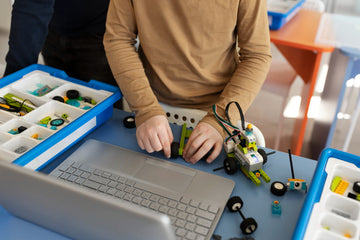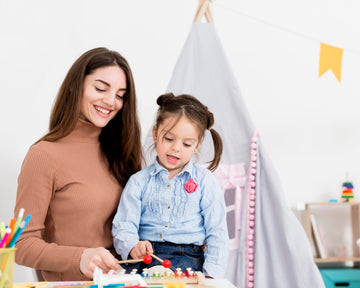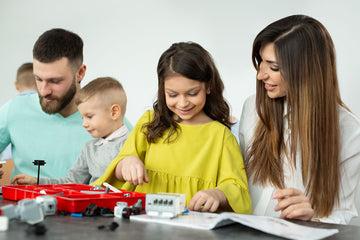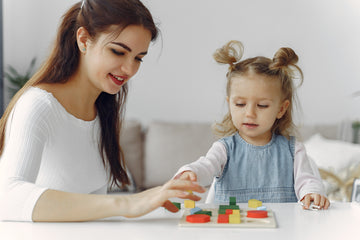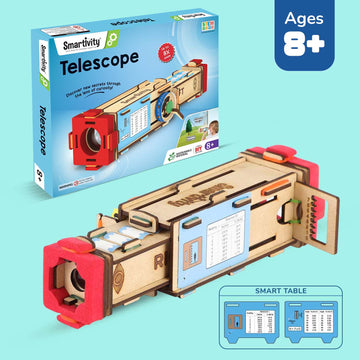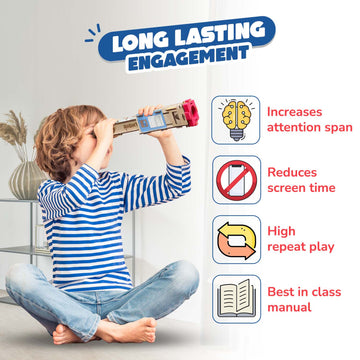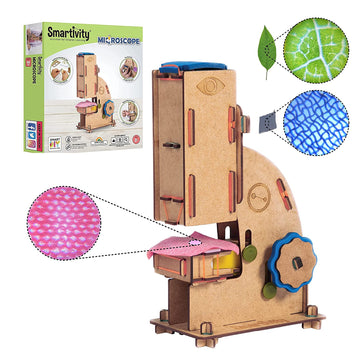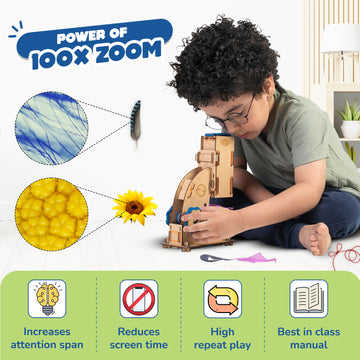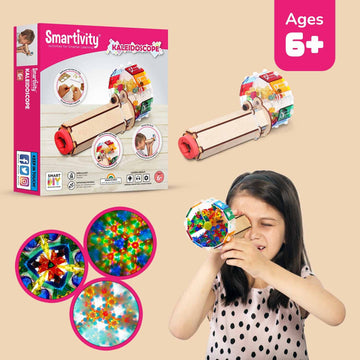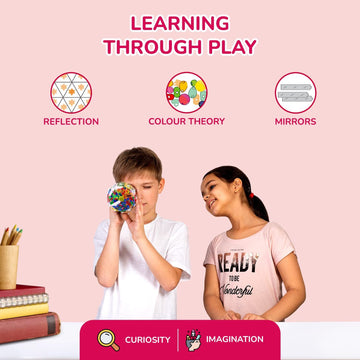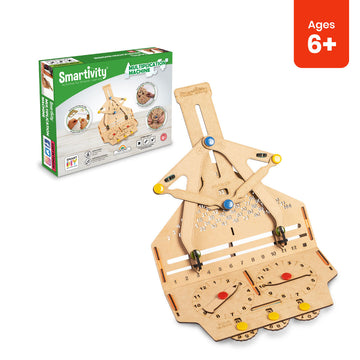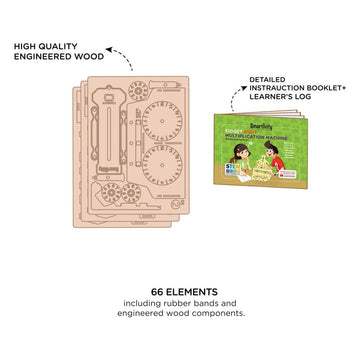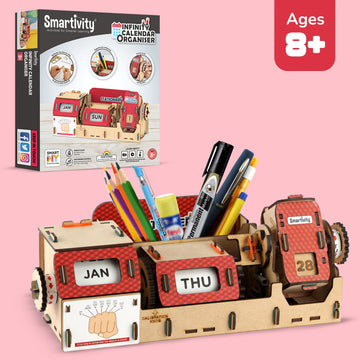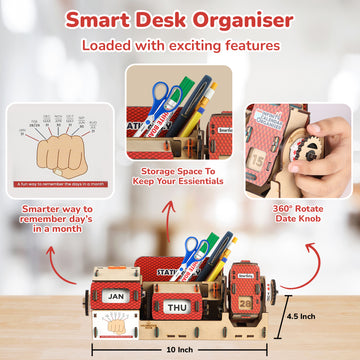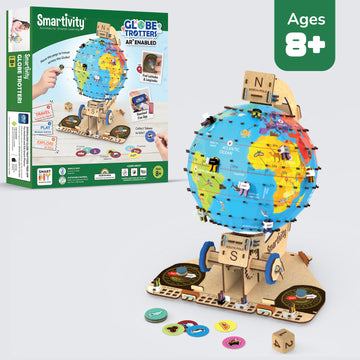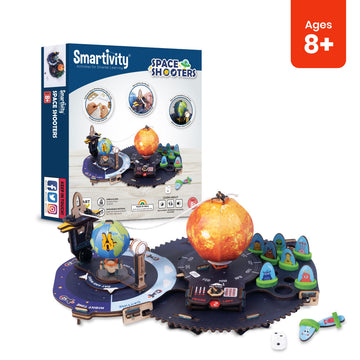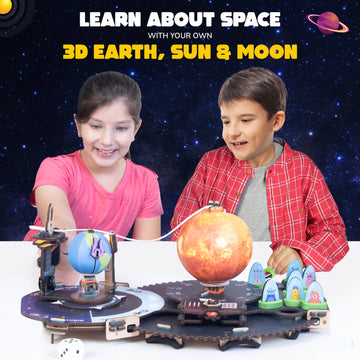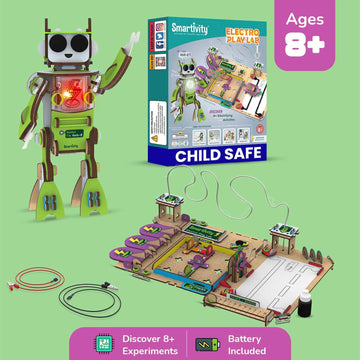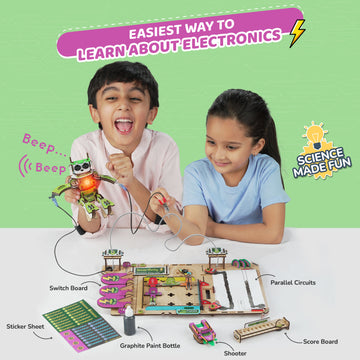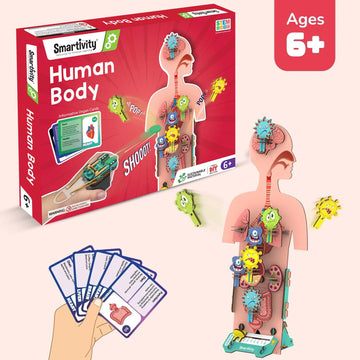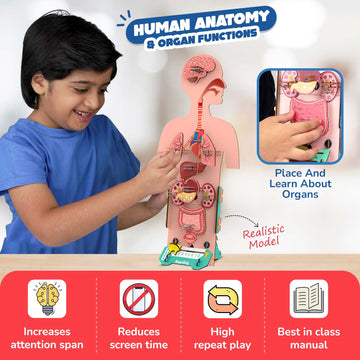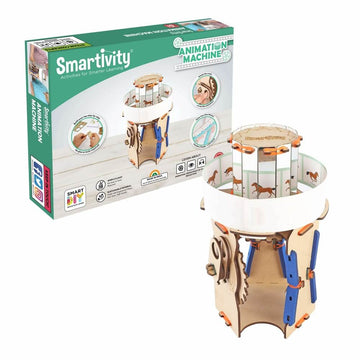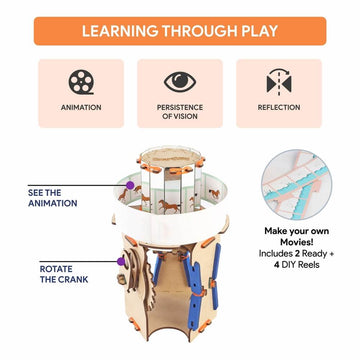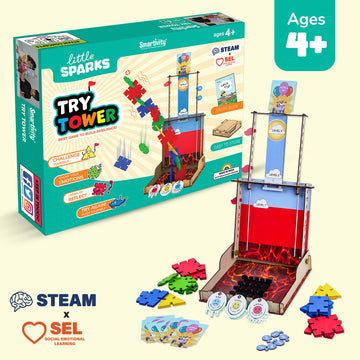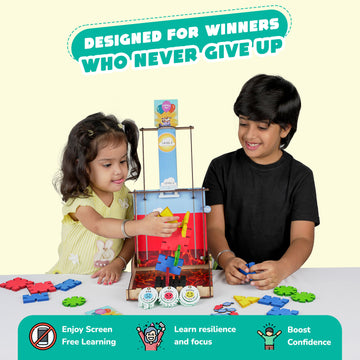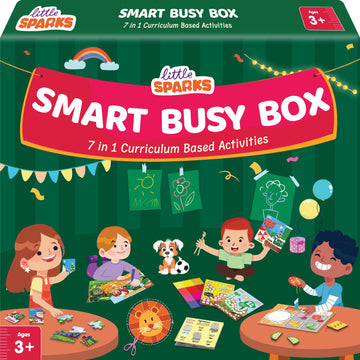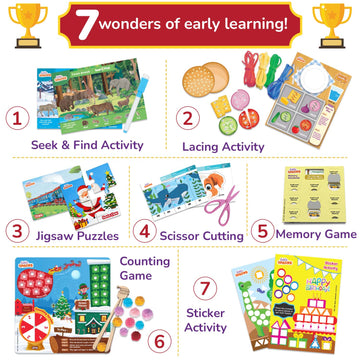The Stages of Child Development: How You Know If Your Child is on Track
by Smartivity on Fri, Sep 30, 22
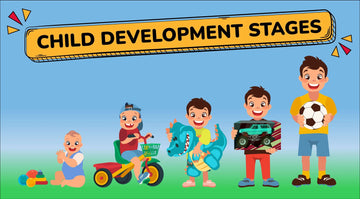
Cheers for carrying your tiny bundle of joy for nine long months! Giving birth, along with enjoying every stage of the pregnancy, is an incredible feeling often inexpressible in words. But after the baby is born, what’s next? Unfortunately, babies don’t come with instruction manuals (like educational toys do), and all children develop differently at their own pace. Therefore, it’s imperative that you track your child’s development minutely and take corrective measures if necessary.
Child's Development is On Track, Isn't It?
Kids undergo various changes in terms of their physical, intellectual, and cognitive capabilities until adolescence. The formative years of childhood have a significant impact on their sense of self later on.
The developmental characteristics of childhood that kids demonstrate at different ages are known as developmental milestones. Tracking this progress through early growth and development study is crucial to understand whether your baby is on track or not.
However, most parents don’t recognize the importance of early childhood. As a result, parents often fail to provide children with the best environment for a well-rounded education. This blog post will walk you through the various developmental milestones and the warning signs of child developmental delays.
5 Stages of Child’s Development
Child development refers to how a child grows, changes, and flourishes their skills not only physically but also emotionally, socially, conjunctively, and communicatively.
A child’s development consists of five stages: -
Newborn (0 to 3 months)

During the first stage of a child’s development, the bodies and the brains of new-born babies learn to adjust to the outside world. Between birth and three months, your tiny tot will learn to do the following things:
- Grip objects in their hands
- Turn their heads towards you or grab your fingers
- Recognize certain smells
- Either cry or smile to indicate a need and move their head from side to side
Infant (3 to 12 months)

During the infancy period, new abilities start developing quickly in infants. These include:
- Learn to bring hands together
- Control their head movements
- Sit up without support
- Babble and respond to their name.
- Signs of physical development in early childhood, such as picking up objects, crawling, and even standing with support, start to appear.
- Cognitive development in infants also starts. This includes starting to arrange objects into patterns and shapes, and learning new things.
Toddler (1 to 3 years)

Between one and three years of age, a toddler learns to do the following things:
- Develop speech skills
- Learn to walk without any assistance, climb stairs and jump
- Can identify familiar things in picture books
- Can solve puzzles
- Can name colours, hold crayons in hands, recognize letters and draw shapes.
- Use short sentences and even follow simple instructions.
Pre-school age (3 to 4 years)

Between the ages of three to 4 years, the following features develop:
- Children refine their motor skills. They can throw the ball, skip and hop, and dress.
- They are full of imagination and creativity
- Start developing their concentration power
- Their communication skills improve
- They are able to use tricycles and wheeled toys
- They are able to cooperate with other children and make friends.
School age (4 to 5 years)

School children are now fully developed and possess the following characteristics: -
- Respond to reasoning
- Recite nursery rhymes and enjoy singing
- Can dress, eat and wash their clothes independently
- Their hand-eye coordination and motor skills are developed
- They can use imaginative and creative play
- They like to initiate conversations with others.
Identifying Developmental Delays in Your Child
Not all children develop uniformly. Development delays are common in childhood, occurring in 10% to 15% of preschool children, as per an article published in the Singapore Medical Journal. This happens when your child lags behind their peers in one or more areas and this affects your child’s physical growth, cognitive, communicative, social, emotional or behavioral skills.
Child development delays often involve more than one area of development. When a child has delays in many or all areas, they are called global development delays, which are less common. Since a child's development delay can affect the acquisition and nurture of appropriate skills in one or more areas, it is crucial to recognize the early signs of such delays, determine their causes and address them quickly.
Signs of Physical Developmental Delay
Some signs of physical development delay include not being able to stand up even with support after the age of one, issues in sitting and moving their legs or arms, having trouble with their vision and hearing, and suchlike. All these signs are related to physical development in children.
Signs of Speech or Language Delay
Speech or language delays are receptive language disorders, in which a child has difficulty understanding the language and concepts. Kids with this type of speech disorder may have trouble identifying colors, body parts or shapes. Apart from this, expressive language disorders include the child having a reduced vocabulary of words and complex sentences. Furthermore, your young one may be slow to babble, talk and create sentences or phrases.
Signs of Social or Emotional Delay
This development delay is typical for children with difficulty with social and emotional skills. They may feel challenged in dealing with frustration or coping with change. Due to the differences in a child's brain development, they may process information or react to their environment differently than children of the same age. Such delays can impact the children’s learning ability, communication skills and interaction with others. When the surroundings become emotionally or socially demanding, in such scenarios, children may have prolonged tantrums and it takes longer for them to calm down. This behavior of frustration can be the signal that the child needs more support to cope with social and emotional challenges.
Signs of Cognitive Developmental Delays
This delay affects the child’s intellectual functioning and causes learning difficulties that often become evident after the child begins schooling. Children who are suffering from cognitive delays may also have difficulty communicating and playing with other children. A problem in thinking logically, lack of curiosity and age-appropriate adaptive skills, and inability to remember things are some common signs of cognitive developmental delays.
Signs of Vision Problems
When specific visual skills have not developed entirely or are poorly developed, children may cause learning difficulties and become stressed. It is rare to identify that the child is suffering from vision issues because the child may not tell you that they are having vision problems as they may think the way they see is everyone they see. The signs that indicate the child has vision problems include frequent eye rubbing or blinking, seeing double, losing concentration when reading, frequent headaches, tilting the head to one side and holding reading materials close to the face.
Therapies for Child Development Delays
Although there is no proper treatment to cure child development delays, therapies are effective in helping children catch up with their peers. Such as: -
-
Physical Therapy:
It is often helpful in developing a child's motor skills.
-
Occupational Therapy:
This therapy includes addressing fine motor skills, sensory processing and self-help issues.
-
Speech and Language Therapy:
Speech and language therapy is typically used to address issues related to the areas of understanding and producing speech or sounds.
-
Behavioral or Social Therapy:
This therapy is needed to develop social behaviors and nurture life skills which are a must in every child.
Even if your child is working with early intervention to develop life skills, as a parent, you may wonder how you can help your little ones develop the right skills. The good news is that Smartivity offers a plethora of educational and fun activities that can help children to build skills. Even our typical kid plays, such as Super Big Awesome Magic Coloring Kit can build gross motor skills. Smartivity’s Space Explorer- 5 in 1 Activity Kit helps develop all-round early age development milestones while having fun.
Kids learn from their surroundings and the toys they play with. Hence, parents need to engage them with suitable toys to create a highly interactive space for their children that motivates them to build constructive skills that can last them a lifetime.



